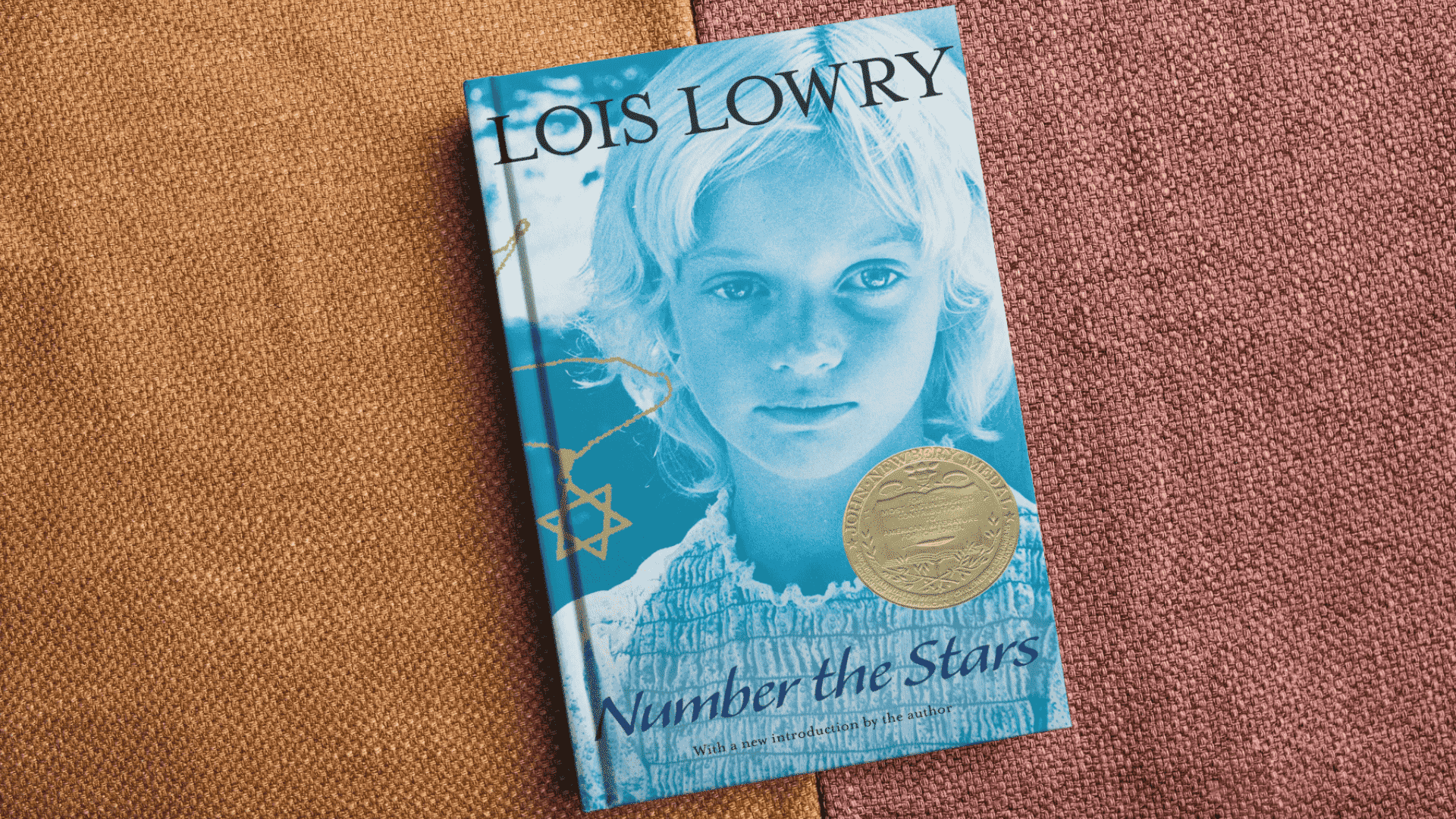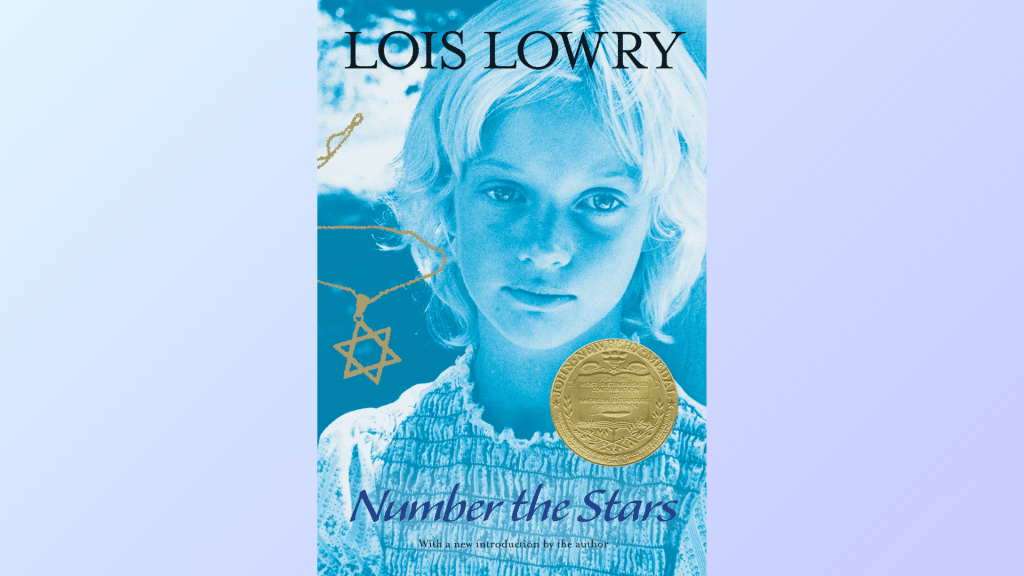Stories have the power to bring history to life in ways that facts alone cannot.
Lois Lowry’s Number the Stars is one of those rare books that helps readers, both young and old, understand the impact of courage in everyday situations.
Set against the backdrop of World War II, it shows how ordinary families faced extraordinary choices, making it more than just another piece of historical fiction.
The novel continues to start discussions about bravery, friendship, and responsibility decades after its release.
In this post, I’ll tell you what makes the book so meaningful, starting with a closer look at its background.
Overview of the Book
Here are the basics:
- Author: Lois Lowry, also known for The Giver
- Published: 1989
- Genre: Children’s historical fiction
- Awards: Newbery Medal in 1990
- Setting: Copenhagen, Denmark, during World War II
What makes this book special is the way Lowry tells history through a child’s eyes. Instead of facts and dates, she shows what fear, hope, and courage felt like in everyday life. That’s why the story has been translated into many languages and is still taught in schools around the world.
Number the Stars: Book Summary

From the very first chapter, Number the Stars by Lois Lowry takes you into Nazi-occupied Denmark. Ten-year-old Annemarie Johansen lives with her family, where life feels almost ordinary at first. That changes when her best friend, Ellen Rosen, is targeted for being Jewish.
The Johansens hide Ellen by pretending she is part of their family. One night, Nazi soldiers storm their home, and Ellen’s safety depends on their quick thinking.
As the danger grows, Annemarie takes on a role she never imagined, helping the Resistance. In one key moment, she carries a package vital to the escape plan. When soldiers stop her, she distracts them by acting like a frightened child.
Her courage makes it possible for Ellen and her family to escape safely to Sweden. Annemarie learns that bravery doesn’t mean being fearless. It means acting when it matters most.
Setting and Historical Context
The story takes place in Denmark in the early 1940s, during the Nazi occupation. People lived under strict rules, food shortages, and constant watch. Jewish families, like Ellen’s, were in constant danger because the Nazis planned to send them to concentration camps.
What makes the book powerful is that it’s based on real events. Danish citizens helped thousands of Jews escape to Sweden, often by fishing boats at night.
By setting the story in this time, Lois Lowry shows not just what happened, but what it may have felt like for children living through it.
Chapter-by-Chapter Breakdown
This breakdown walks through the main parts of the story, showing how tension, courage, and hope unfold from beginning to end.
1. Beginning
The story begins in Copenhagen, Denmark, during the early years of World War II. We meet Annemarie Johansen, her younger sister Kirsti, and her best friend Ellen Rosen.
Life seems almost normal at first, but Nazi soldiers patrol the streets and tension is everywhere. Even simple things, like running through the city or shopping for food, feel uneasy under their watch.
From the start, readers sense that danger is close and that this ordinary family will soon face extraordinary events.
2. Middle
In the middle chapters, the danger becomes real. Jewish families are targeted, and Ellen’s family must go into hiding. The Johansens protect her by pretending she is their daughter when soldiers search their home in the middle of the night.
Annemarie stays calm under pressure, even when a soldier grabs Ellen’s necklace, which could have revealed the truth. These tense scenes show the constant fear of living under Nazi rule.
At the same time, we see the quiet courage of Annemarie’s parents and the clever ways ordinary people resisted.
3. Climax
The climax comes when Annemarie must take on a dangerous task. A vital packet for her uncle’s mission is left behind, and without it, Ellen’s escape may fail.
Annemarie is told to deliver it, a burden far beyond her years. On the way, Nazi guards stop her and search her basket. She pretends to be a frightened girl carrying lunch and fools them.
In this moment, Annemarie shifts from a child watching events to someone shaping them. Her courage keeps the mission alive and saves her friend’s family.
4. Ending
The ending brings both relief and reflection. Ellen and her family reached safety in Sweden because of the courage of Annemarie, her family, and the Danish Resistance.
Annemarie learns that courage isn’t the absence of fear but the choice to act despite it.
The final chapters end with the hope of peace and the reminder that even in dark times, small acts of bravery can shine.
Main Character Analysis
The strength of Number the Stars lies in its characters, each showing how ordinary people face extraordinary challenges.
- Annemarie Johansen: A ten-year-old who grows from a cautious child into someone willing to take risks for others.
- Ellen Rosen: Her Jewish best friend, whose safety depends on trust, quick thinking, and the bravery of those around her.
- The Johansen Family: Loving parents who quietly resist the Nazis and protect those in danger, while little Kirsti reflects the innocence of childhood amid war.
- Peter Neilsen: A determined Resistance fighter whose actions highlight the sacrifices made for freedom.
- Nazi Officers: Always suspicious, they embody the fear and danger that hangs over daily life in occupied Denmark.
Together, these characters show that courage can take many forms, from a child’s quick decision to a family’s silent act of defiance.
Core Themes and Takeaways
Courage is one of the strongest lessons. Annemarie learns that bravery doesn’t mean being without fear, but choosing to act even when afraid.
Friendship is shown through Annemarie and Ellen. Their loyalty and trust push them to protect each other when danger is close.
Resistance comes through the Danish people. They did not fight with weapons but with unity, clever planning, and compassion.
The title is drawn from a Bible verse: “He numbers the stars one by one.” It reminds readers that every life matters and that hope is possible even in dark times.
Together, these themes show the story is not only about war but about strength, kindness, and resilience.
Adaptations:
Number the Stars has been released as audiobooks and stage plays, often performed in schools and community theaters. A film version has been discussed but never made.
About the Author

Lois Lowry is an American author born in Honolulu, Hawaii, in 1937. Her father’s military career meant she moved often, living in places like New York, Pennsylvania, and Tokyo. These experiences shaped how she saw the world and its people.
Books became her safe haven, and reading gave her a sense of home wherever she lived. That love of stories grew into a passion for writing, leading her to create books that speak honestly to children and young adults.
Lowry has said she writes to help kids think about life, choices, and the world around them. Her work ranges from playful stories to serious novels like Number the Stars and The Giver, both of which remain widely read and discussed.
Number the Stars earned the Newbery Medal in 1990 and has received lasting praise from readers and critics. It holds a 4.2/5 rating on Goodreads and a perfect score on Common Sense Media.
For many, it was the first book that made the Holocaust feel real and understandable, which is why it continues to appear on school reading lists today.
Classroom and Educational Use
Number the Stars is widely used in schools because it builds both literacy and historical understanding. The story introduces new vocabulary, strengthens reading comprehension, and connects students to real events from World War II.
Teachers can use the book in many ways, such as creating word lists, guiding discussions, or assigning short research tasks on the Holocaust and Danish Resistance.
Sample discussion questions:
- What does bravery mean to you?
- Why did the Johansens risk their safety?
- What choices would you have made in their place?
Creative classroom projects:
- Write journal entries from Annemarie’s perspective
- Draw maps or escape routes tied to the story
- Act out scenes to explore character emotions and decisions
By linking the novel to history, students see how small choices can change lives. The story shows that ordinary people can act with extraordinary courage.
Reading Level and Age Appropriateness
Number the Stars is most often recommended for ages 9–12 (grades 4–7).
It works well because:
- The language is clear and easy to follow
- Serious themes are handled with honesty but without graphic detail
- It sparks meaningful discussions about courage, choices, and justice
When shared with kids, you’ll notice how quickly they begin asking questions. That curiosity is what makes it such a valuable book for young readers.
Buying Options
If you’d like a copy, the following formats are available:
For teaching, I’ve found that printed copies work best, as students can annotate and highlight as they go.
Conclusion
Number the Stars remains a powerful reminder of how history can be understood through the eyes of children.
What sets it apart is not only its focus on courage and loyalty but also the way it invites readers to reflect on their own choices in moments of uncertainty. The story shows that even small decisions can carry great meaning, especially when they come from compassion.
For today’s readers, it continues to spark questions that reach far beyond its pages, making it a lasting tool for both classrooms and families.
Want more thoughtful book insights? Read my other blogs for deeper reading inspiration.











